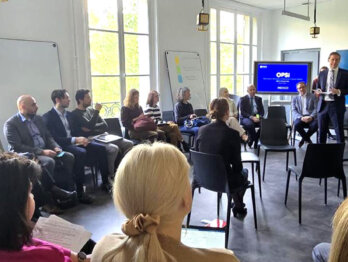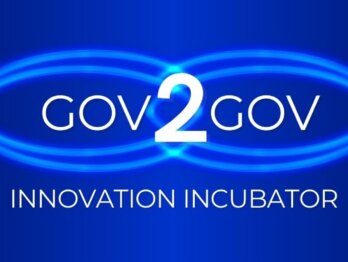Rehearsing the future: Turning anticipation into action in Sweden

Innovation has always happened in the public sector and often in response to crises. Necessity is the mother of invention and crises force governments to act and innovate as we go, but who is capturing those insights, adapting dynamically, and changing the way “business as usual” is carried out in the public sector? As a recent experience revealed in Sweden, for successful proactive and anticipatory governance, suspension of disbelief and rehearsal are key, as are dedicated, structured process and resources to capture learnings and anticipate potential futures and the evolution of specific situations.
In early February, a cross-disciplinary expert team from the Governance Directorate of the OECD traveled to Stockholm to explore and test an innovative “Forward Looking Cell” exercise concept (sometimes called the “Pandora Cell”) in collaboration with the Swedish Civil Contingencies Agency (MSB) and with insights from the Danish Emergency Management Agency (DEMA). The innovative exercise concept is a practical process for rehearsing different possible futures in crisis response situations. It intends to generate emergent knowledge for decision-making by asking “What else could happen?” and “What might we do differently about it, right now, if the situation unfolds in an unexpected way?” as well as to interrogate the resilience of the current governance structure.
It was tested as part of an 18-month project exploring ways to strengthen civil preparedness through applications of anticipation and strategic foresight practices as well as a through the lens of supply security and collaborative relationships between numerous public and private sector stakeholders. Indeed, anticipatory activities are a key part of the OECD Recommendation on the Governance of Critical Risks.
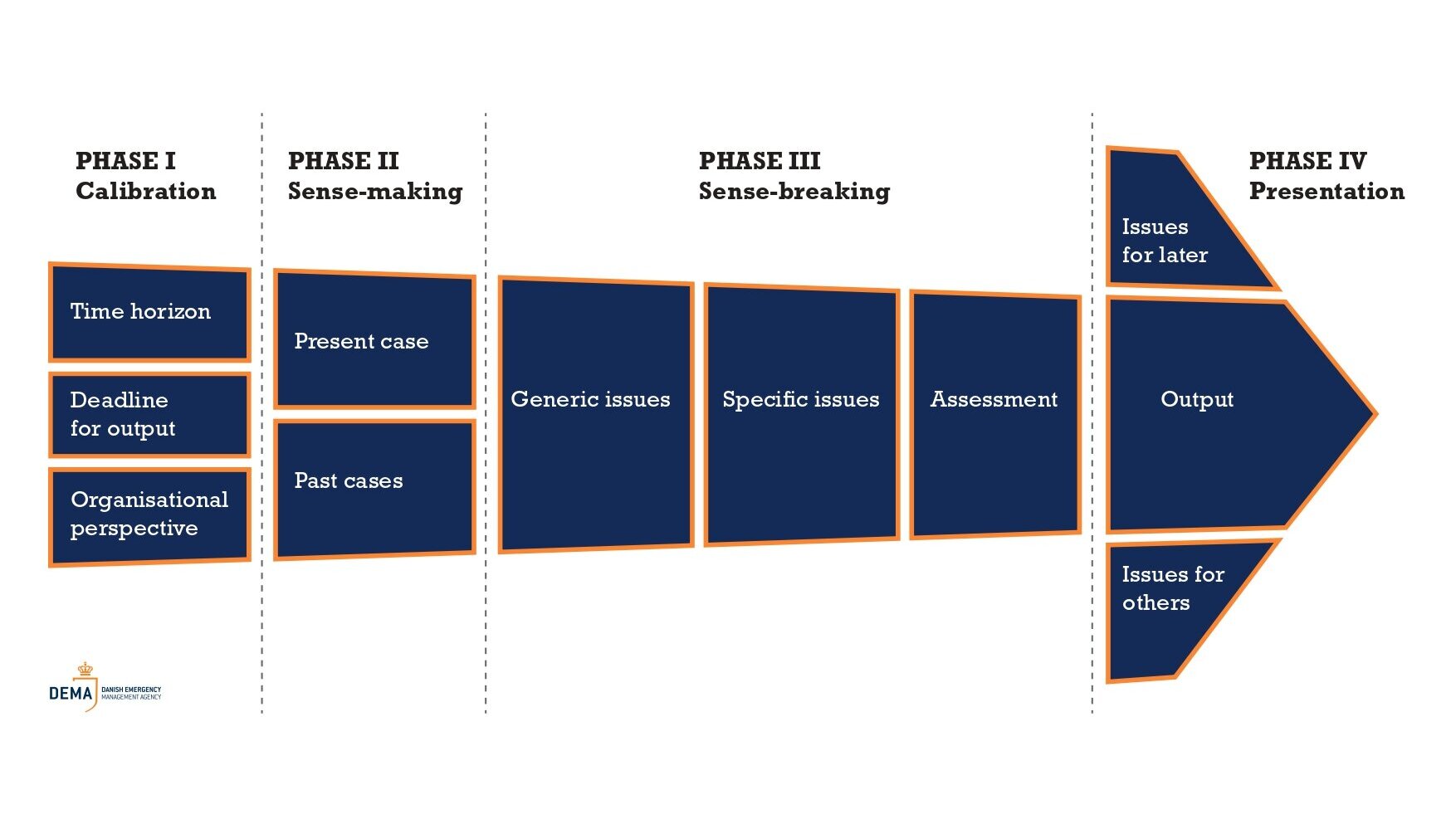
The need for anticipation in Sweden
As part of the OECD’s collaboration with Sweden, the OECD team identified key opportunities in Sweden to further embrace of strategic foresight and its application to civil preparedness and crisis response, including a need for exercises for rehearsing the future. The OECD analysis identified the following opportunities for Sweden:
- Demand, mandate, and legitimacy
- Legitimise and support anticipation through high-level advocacy in the civil preparedness system to generate demand.
- Engage senior leaders in foresight analysis, facilitated by experienced practitioners to focus on emerging challenges and futures.
- Unify language and focus on the importance of anticipatory actions in crisis preparedness, promoting a common vision and initial ambitions.
- Link anticipatory intelligence with operational agency-level needs, identifying key uncertainties and potential shifts.
- Highlight the value of anticipation in addressing emerging challenges through key flagship initiatives.
- Dedicated and dynamic capabilities
- Develop tailored training programmes in strategic foresight to enhance futures literacy.
- Create safe spaces for stakeholders to experiment with and learn about anticipatory approaches.
- Incentivise engagement with foresight activities through dedicated time, resources, and integration into risk assessments and supply security practices.
- Explore and define governance structures for strategic foresight, including a dedicated competence center or distributed contact points, to clarify roles and facilitate foresight efforts.
- Form a community for sharing anticipatory practices, methodologies, and peer learning, open to various stakeholders.
- Embeddedness with governance and existing practices
- Leverage existing foresight experiences in sectors like defense for joint learning and anticipatory intelligence exchange.
- Utilise existing mechanisms and touchpoints to embed foresight into decision-making, enhancing its influence on policy and strategy.
- Ensure anticipatory intelligence is actionable and connected to priorities, integrating analysis into processes like risk assessments and creating discussion points for leadership to demonstrate its value.
- Develop immersive simulations and games to engage stakeholders in exploring future scenarios, enhancing collective understanding of potential impacts.
- Create indicators for evaluating preparedness measures against future contexts, ensuring initiatives are future-proof and enhance resilience.
- Adopt tailored communication strategies to clarify the role of anticipation, address misconceptions, and engage stakeholders across the preparedness ecosystem.
Anticipatory intelligence is the process of gathering emergent knowledge for decision-making. It is an intelligence process that aims to broaden the understanding of possible developments and supports adaptability and proactivity towards alternative and competing scenarios in specific contexts.
Many countries beyond Sweden have yet to fully embrace the potential utility of strategic foresight in risk governance and contingency planning. Based on our analysis, the type of strategic foresight often applied in strategy and policy development is not often practiced in the field of civil preparedness and crisis response. Risk assessment and strategic foresight are two very different disciplines with different sets of methods and professionals engaged in each practice. It does not help that the understanding of language used by foresight experts and practitioners differs compared with those working in civil preparedness and crisis response —even the word “scenario” means something very different. One goal of this project is to build more bridges between these different practices through more tactical and practical applications of strategic foresight for rehearsing the future.
OPSI explored a similar concept of crisis-adjacent innovation units during the Covid-19 pandemic in a previous blog post. Independently, the Danish Emergency Management Agency took this concept of a separate innovation unit much further by developing the initial “Forward Looking Cell” approach and deploying it directly as part of the government’s Covid-19 response, especially in the early stages of the pandemic.
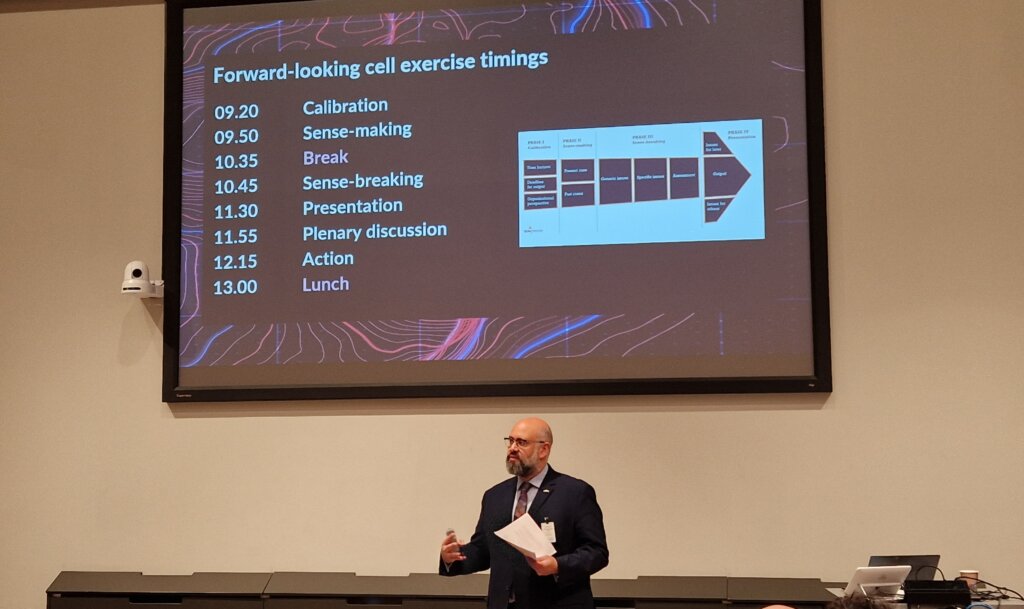
Case Example: Applying the “Forward Looking Cell” to a hypothetical landslide in southern Sweden
In this case, the “Forward Looking Cell” concept was applied to a hypothetical situation: a huge landslide in southern Sweden. The aim was to improve the civil preparedness systems’ anticipatory capabilities in the face of uncertainty and evaluate the exercise process for potential reuse within Sweden. To test for different responses, half of the group was asked to review the situation as a currently developing case and the other treated it as a past event. The exercise aimed to test the application of this concept within Sweden’s crisis management framework, with a specific focus on the transport and food sectors, who participated in the exercise.
Activities included a comprehensive analysis of the system’s functioning, the integration of anticipatory intelligence, strategies for communicating to decision-makers, and the co-ordination among stakeholders for a resilient crisis preparedness system. The exercise included a mock-briefing to the Director General to test the Swedish cell’s ability to communicate to decision-makers about uncertain potential events based on the analysis within the cell. The exercise showcased how anticipatory intelligence could be immediately used in crises.
Key stages of activities that structure the “Forward Looking Cell” concept include:
Calibration: involves setting the analysis scope by determining a default time horizon for analysis (including how adjustments will be handled), setting a deadline for outputs, and aligning the organisational perspective for the analysis before beginning the process.
Sense-making: Sense-making, involves assembling the cell to generate an overview by researching historical records of similar crises, mapping out major issues, lessons learned, and expected trajectories, with an evolving emphasis from historical to present-case information, conducted rapidly in teams or individually, leading to a plenary session to decide further research directions.
Sense-breaking: involves challenging the standard crisis trajectory by considering alternative outcomes—exacerbation, prolongation, fatiguing, reframing—using a pre-compiled “Issues Inventory” to assess potential issues and their relevance, strength, and momentum in the current crisis context, leading to a prioritization of pertinent issues for further analysis.
Summarising: involves making a qualitative assessment of issues most likely to worsen the current crisis and developing concise and clear recommendations to crisis leadership, while maintaining distinct roles within the crisis management organisation and ensuring good communication to facilitate constructive reception of the cell’s advice.
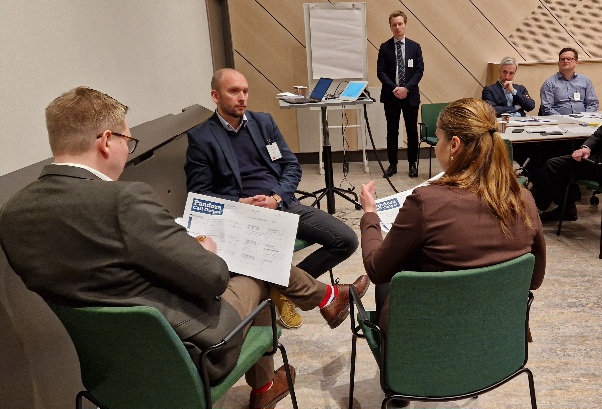
What did we learn?
The innovative approach of the “Forward Looking Cell”
The “Forward Looking Cell” exercise is a valuable response to the evolving landscape of crisis management, where traditional reactive measures are increasingly supplemented with proactive, anticipatory strategies. By leveraging the “Forward Looking Cell” concept, the exercise tested some tactical anticipatory actions and horizon scanning in navigating the complexities of contemporary crises, which are 6haracterized by their unpredictability and the interconnected nature of global challenges. In fact, one “wild card” was thrown into this exercise that simulated how the small-scale situation could quickly escalate into an international crisis, an important practice to rehearse. Participants were encouraged to actively suspend their disbelief of the hypothetical situation in order to engage with the unexpected and unknowable, sometimes referred to as “black swans”.
Collaborative model for crisis management
A cornerstone of the exercise was its emphasis on collaboration across the crisis management ecosystem. The “Forward Looking Cell” model promotes a multidisciplinary approach, involving stakeholders from various sectors, including transportation and food, which are critical to societal resilience. This model fosters a shared understanding and anticipatory intelligence, crucial for identifying potential threats, detecting early signals, and developing comprehensive mitigation strategies. The very structured approach developed by Denmark proved to be a successful model with the crisis preparedness crowd in Sweden, which live and breathe plans, planning, and contingencies and allowing for ambiguity and complexity to be systematically included in ongoing operations.
Peer exchange and learning from DEMA
The exchange with the Danish Emergency Management Agency (DEMA) introduced participants to the “Forward Looking Cell” concept and highlighted the value of international collaboration in enhancing crisis preparedness and response capabilities. Danish colleagues shared practical tips
about how to communicate the output to senior decision-makers, how to make the case for dedicated resources for anticipatory capabilities alongside the regular crisis response activities, and the composition of a successful “Forward Looking Cell” (surprise: top experts are not always the best contributors). The involvement of Denmark also signaled to Sweden that this approach is, in fact, possible and served as a proof of concept that has already been used in the real world of crisis response.
Insights on civil preparedness and anticipatory capabilities in Sweden
The exercise also served as a pilot test for the “Forward Looking Cell” concept within Sweden’s crisis management framework. The positive feedback and the tangible outputs generated during the exercise suggest that this model not only enhances the anticipatory capabilities of the civil preparedness system but also holds promise for broader application across different sectors and crisis scenarios. The exercise was also useful for identifying gaps in the current civil preparedness system, particularly in the context of uncertain and complex crisis scenarios. The “Forward Looking Cell” exercise highlighted the need for a more dynamic, flexible approach to crisis management, capable of adapting to evolving threats and leveraging anticipatory intelligence to inform strategic decision-making.
Final thoughts
As Sweden and other nations continue to face an increasingly uncertain global landscape, the lessons learned from this exercise and the “Forward Looking Cell” concept offers a model for anticipating and shaping the future of crisis management and preparedness.
If you would like to try out the “Forward Looking Cell” in your own work, the Danish Emergency Management Agency (DEMA) published a concept summary and practical guide for others to use and adapt.
All photographs cleared by MSB Communications.
This project is funded by the European Union via the Technical Support Instrument, and implemented by the OECD, in cooperation with the European Commission.








